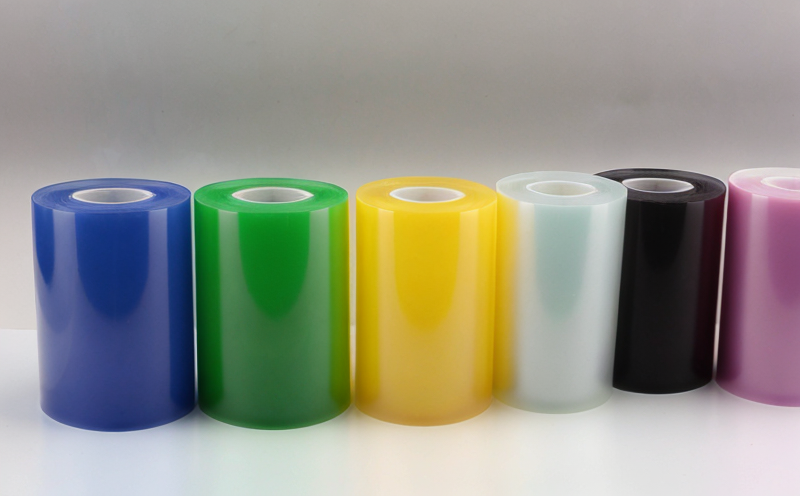EN ISO 2039 Hardness Testing of Plastic Sheets
The EN ISO 2039 hardness test is a critical procedure used to determine the hardness properties of plastic sheets. This standard provides detailed guidance on how to perform this test accurately and consistently, ensuring that manufacturers can rely on standardized results across different laboratories and jurisdictions.
The EN ISO 2039 hardness test involves applying defined pressure from a specified indenter onto the surface of the plastic sheet specimen. The depth of penetration is measured precisely to calculate the hardness value according to the standard formula:
Hardness (H) = (P / A) × K
Where P represents the force applied, A is the area of the indenter's contact with the sample surface, and K is a constant determined by the indenter type used.
The selection of appropriate specimen preparation methods ensures accurate test results. Specimens should be cut from larger sheets to ensure uniform properties across the testing area. The edges must be trimmed to remove any defects or variations that could affect hardness measurements.
The choice of indenter is crucial for obtaining meaningful data. Common indenters used include spherical, cylindrical, and Vickers types. Each type has its own specific application depending on the expected hardness range of the plastic sheet being tested. For instance, a spherical indenter might be preferred when dealing with softer materials where deeper penetration is necessary.
Once prepared, the specimens are placed under controlled environmental conditions prior to testing. Temperature and humidity levels must adhere closely to those specified in EN ISO 2039 to prevent any potential changes affecting the test results. After setting up the specimen correctly on the hardness tester machine, calibrated force is gradually applied until penetration depth reaches a predetermined limit.
Throughout this process, precise measurement of both the applied force and resulting indentation depth is essential for accurate calculations. High-precision instruments like digital load cells and laser displacement sensors are typically employed to achieve these measurements with minimal error.
The resultant hardness value provides valuable information about the material's mechanical properties which can then be used in various applications such as determining appropriate processing parameters during manufacturing processes or selecting suitable substrates for composite structures.
Understanding that different types of plastic sheets possess varying levels of resilience and durability, it is important to note how these factors influence hardness readings. For example, thermoplastics generally exhibit lower hardness than thermosetting plastics due to their molecular structure differences.
Why It Matters
The importance of performing an accurate EN ISO 2039 hardness test cannot be overstated as it plays a pivotal role in ensuring product quality and safety across numerous industries. By adhering strictly to this international standard, manufacturers can ensure consistent performance and reliability of their products.
One key aspect where this testing becomes particularly relevant is within the manufacturing industry. Accurate hardness measurements help control production processes by providing feedback on material consistency throughout various stages. This not only enhances overall quality but also improves efficiency through reduced waste and rework rates.
In terms of product safety, knowing the exact hardness level allows engineers to make informed decisions regarding design specifications. For instance, selecting appropriate materials for packaging that need to withstand certain pressures without compromising integrity is made possible by this information.
From a regulatory perspective, meeting these standards helps companies comply with international regulations and gain market access in countries that mandate adherence to specific testing protocols. This ensures not only legal compliance but also enhances customer confidence in the quality of goods being offered globally.
Industry Applications
| Application Area | Description |
|---|---|
| Film Manufacturing | Determining optimal thickness and hardness settings for packaging films used in food preservation. |
| Thermoplastic Compounds Processing | Ensuring consistent quality during extrusion or injection molding processes by monitoring raw material properties. |
| Automotive Components Fabrication | Selecting appropriate materials for bumper covers and other exterior components requiring impact resistance without compromising aesthetics. |
| Battery Housing Design | Evaluating the suitability of polymer-based housing materials that must maintain structural integrity under varying environmental conditions. |
| Medical Device Manufacturing | Selecting biocompatible plastics for medical devices such as catheters and prosthetic components based on their hardness characteristics. |
| Rod and Profile Extrusion | Controlling the hardness of extruded profiles to meet specific end-user requirements in construction or industrial applications. |
| Blister Packaging Production | Guaranteeing that blister packs have sufficient rigidity while remaining flexible enough for easy application by consumers. |
| Thermoforming Processes | Maintaining uniform thickness and hardness across thermoformed parts used in consumer goods packaging. |
The versatility of the EN ISO 2039 hardness test spans multiple sectors including automotive, electronics, healthcare, and packaging. Its ability to provide precise measurements under controlled conditions makes it an indispensable tool for quality assurance teams across these industries.
International Acceptance and Recognition
The EN ISO 2039 hardness test enjoys widespread acceptance internationally due to its robust methodology and reliability. Many global standards bodies, including ASTM International (formerly known as American Society for Testing and Materials), incorporate variations of this test into their own guidelines.
ISO itself has recognized the importance of this standard by integrating it into broader frameworks related to polymer testing. This recognition underscores the significance of adhering to such internationally accepted practices when conducting hardness tests on plastic sheets.
Countries around the world have adopted EN ISO 2039 as a benchmark for evaluating plastic sheet materials because it offers consistent and repeatable results regardless of geographical location or laboratory setup. This consistency promotes confidence among stakeholders involved in international trade transactions involving these products.





